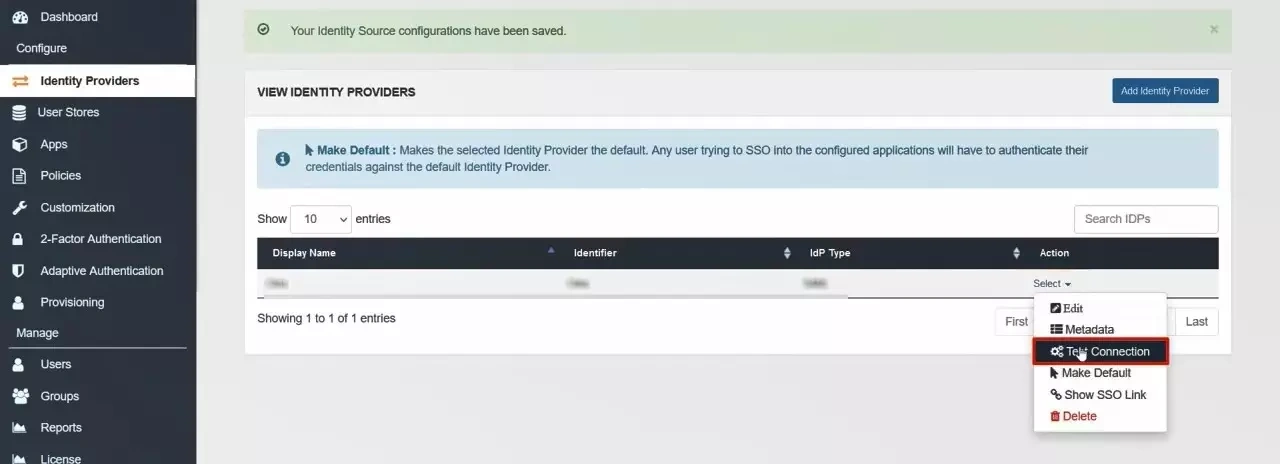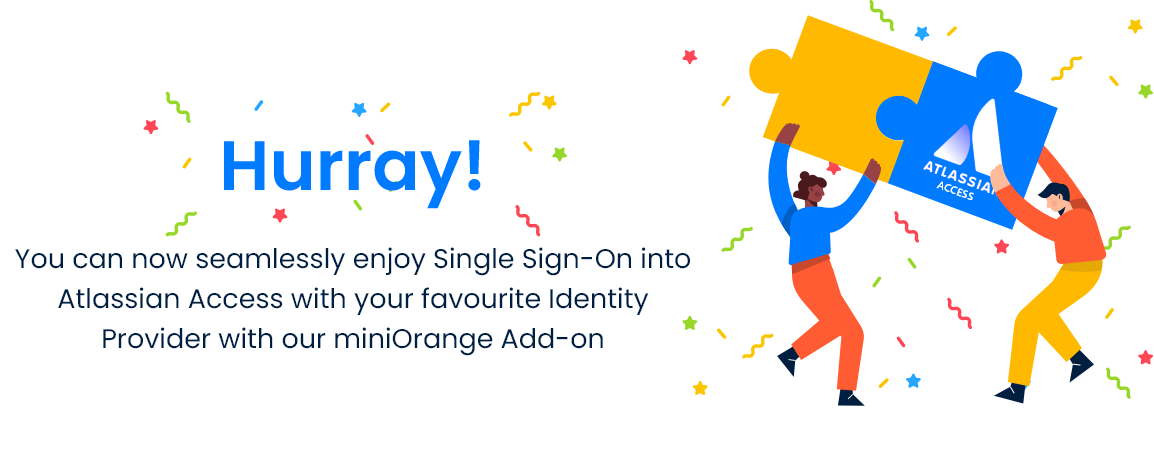Contents
Atlassian Cloud SSO (Single Sign-On) for WSO2 using OAuth Provider
Jira OAuth Single-Sign On(SSO) for Atlassian Cloud allows you to use a single set of login credentials for secure access using miniOrange SSO solution. Single Sign-on (SSO) into your Atlassian Access or Atlassian Jira Cloud Account with any of your existing OAuth Provider credentials for enhanced security using our module.
You can refer the steps to configure Multiple IDPs and Domain Mapping in Atlassian Access from the video or documentation given below
Pre-requisites
1. Atlassian Guard (Atlassian Access) Subscription:
Atlassian Guard is an additional subscription applied across the Atlassian Cloud products like Jira Software, Jira Service Management, Jira Work Management, Confluence, and Bitbucket. It is needed for Single Sign-On (SSO) or any Cloud Service that comes under Atlassian Guard.
2. Domain Verification:
The first step of Atlassian Guard starts with the Domain Verification process to enforce SSO on the managed user accounts. This process verifies that you own a valid domain for managing the user accounts and use the same domain name for the email addresses.
Download And Installation
- Log into your Jira instance as an admin.
- Navigate to Apps → Explore more apps from the header menu.
- Next, search for the miniOrange OAuth/OpenID SSO app.
- Click on Try it free to begin a new trial of the app.
- On the menu bar click on Apps and locate the OAuth/OpenID SSO app and click .
In this document, we will demonstrate the setup in two parts.
Part 1: Configure SAML SSO between Atlassian cloud as SP and miniOrange as IDP
Part 2: Configure SAML SSO between miniOrange as SP and WSO2 as IDP
Part 1 + Part 2 : Testing SSO between Atlassian cloud as SP and WSO2 as IDP using miniOrange Identity Broker.
Part 1: Setup miniOrange with Atlassian Access
Step 1. Setup miniOrange as an Identity Provider
- Login into miniOrange Admin Console.
- Go to Apps and click on the Add Application button.
- In Choose Application Type click on All Apps dropdown and select SAML/WS-FED application type.
- Search for Atlassian Cloud (SAML) in the list.
- Enter the following values in the respective fields, you will receive these values after creating an app in Atlassian access. Refer this step.
-
Custom Application Name Any name would be fine SP Entity ID or Issuer You will receive after configuring Atlassian Access App ACS URL You will receive after configuring Atlassian Access App - Also make sure that Sign Response & Sign Assertion both options are turned ON. Then click on the Save button.
- Once the App is successfully Created, Select that App and then click on Metadata option to get app’s Metadata.
- Since we are using miniOrange as a Brokering Service in this solution, Go to Information required to authenticate via external idp section as highlighted, and Click on Show Metadata Details.
- After clicking on the Show Metadata Details button you can see the metadata details.
- In the left sidebar hover on Users then click on Users List
- Click on Add User and enter details to enforce Single Sign On(SSO) on that user.
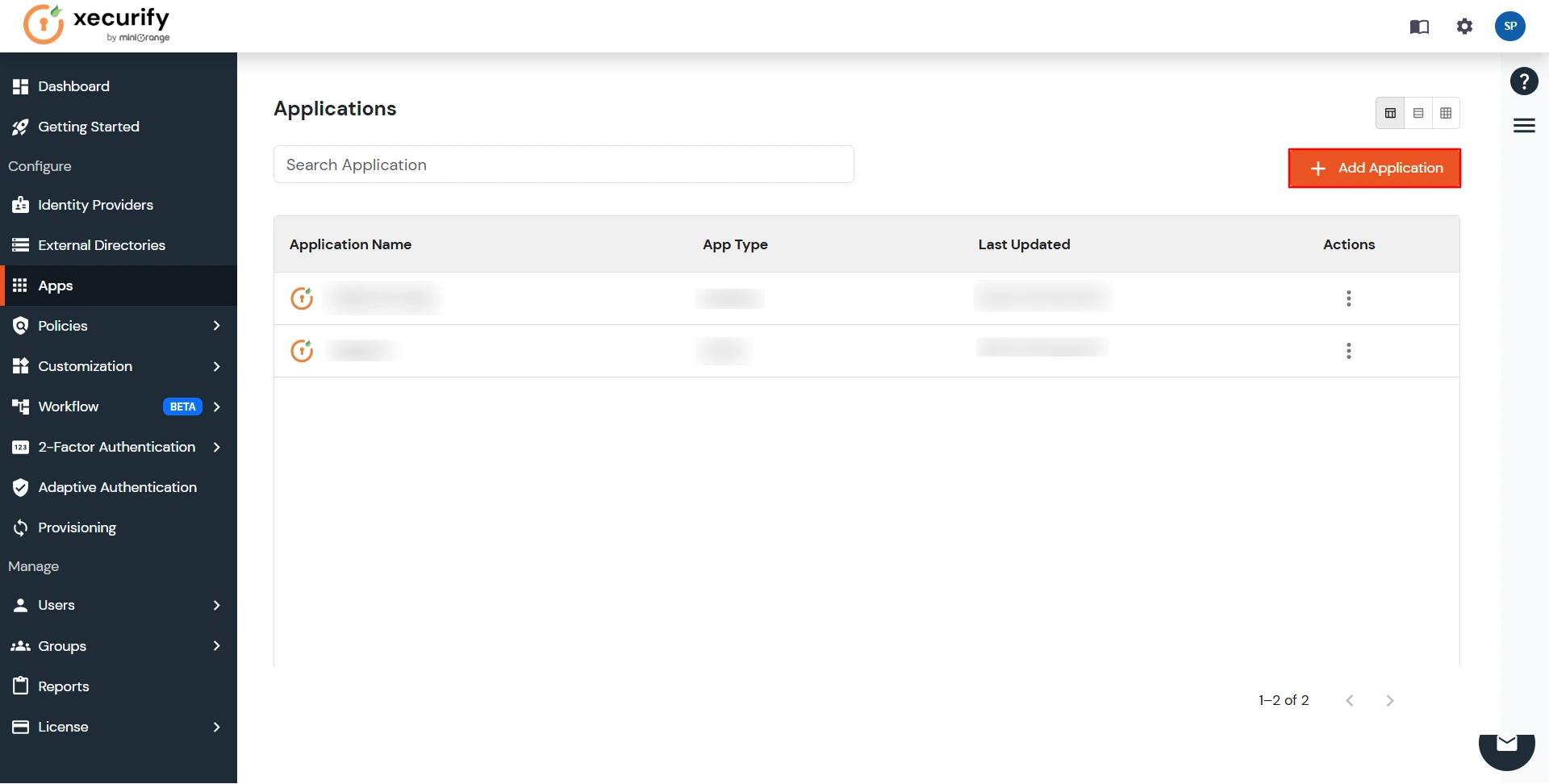
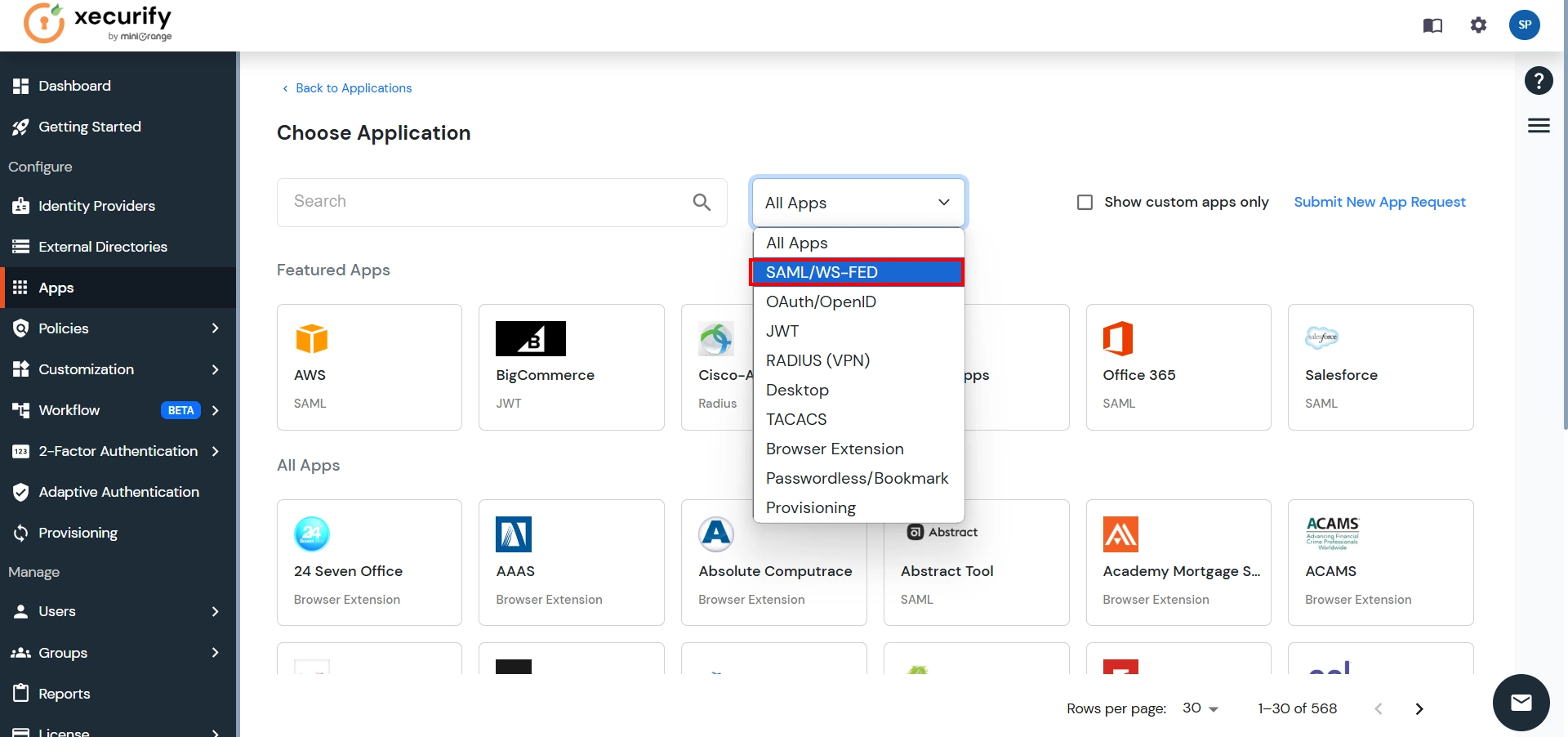
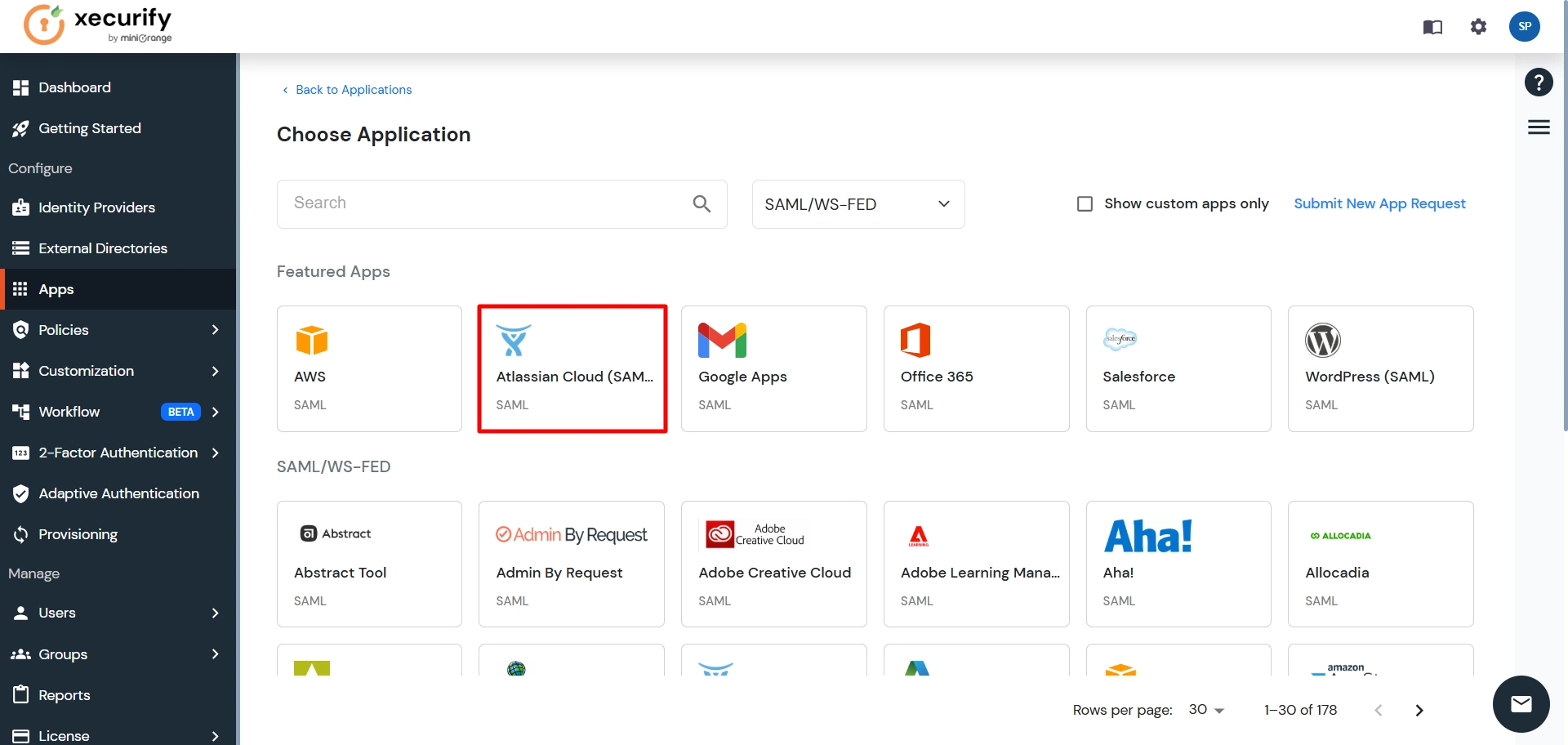
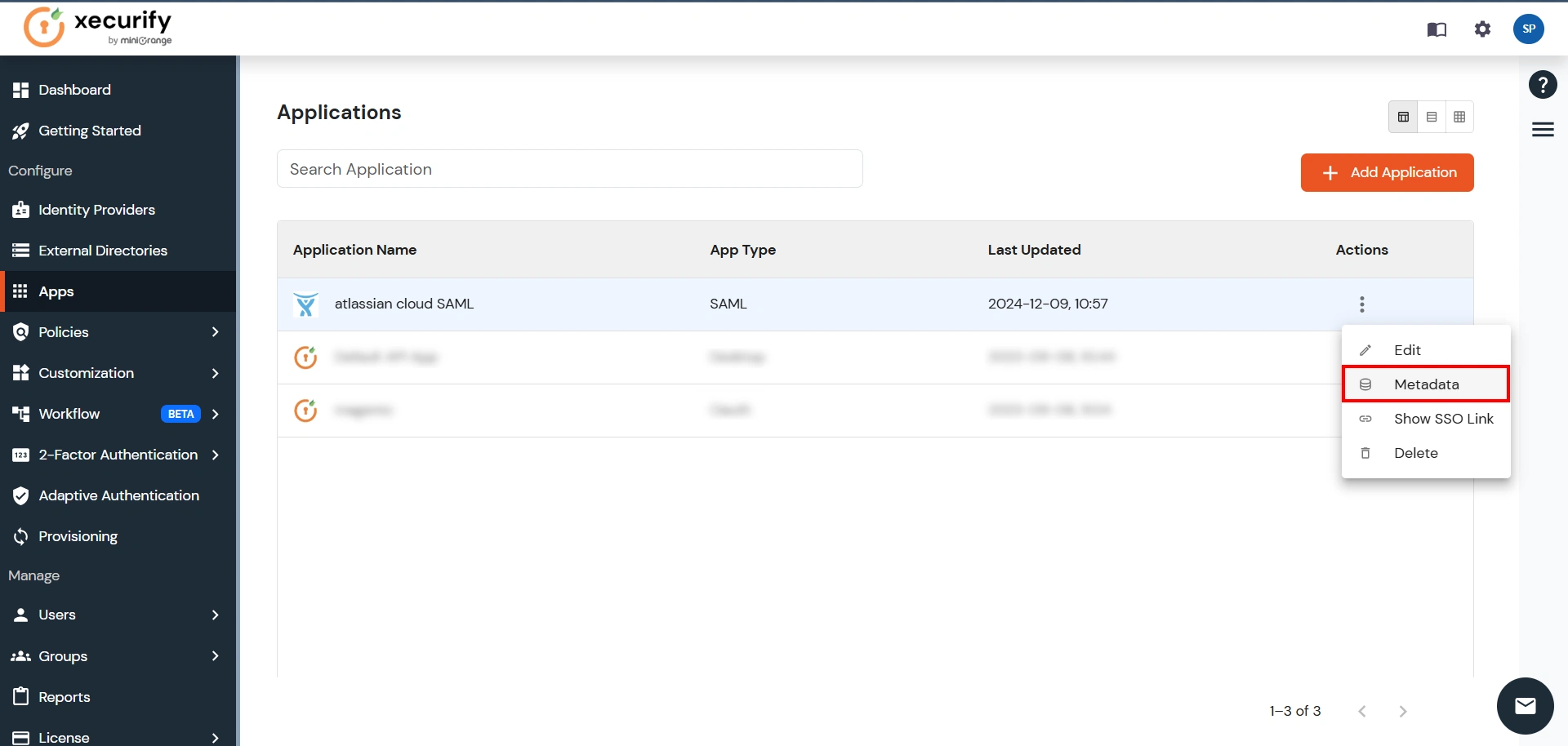

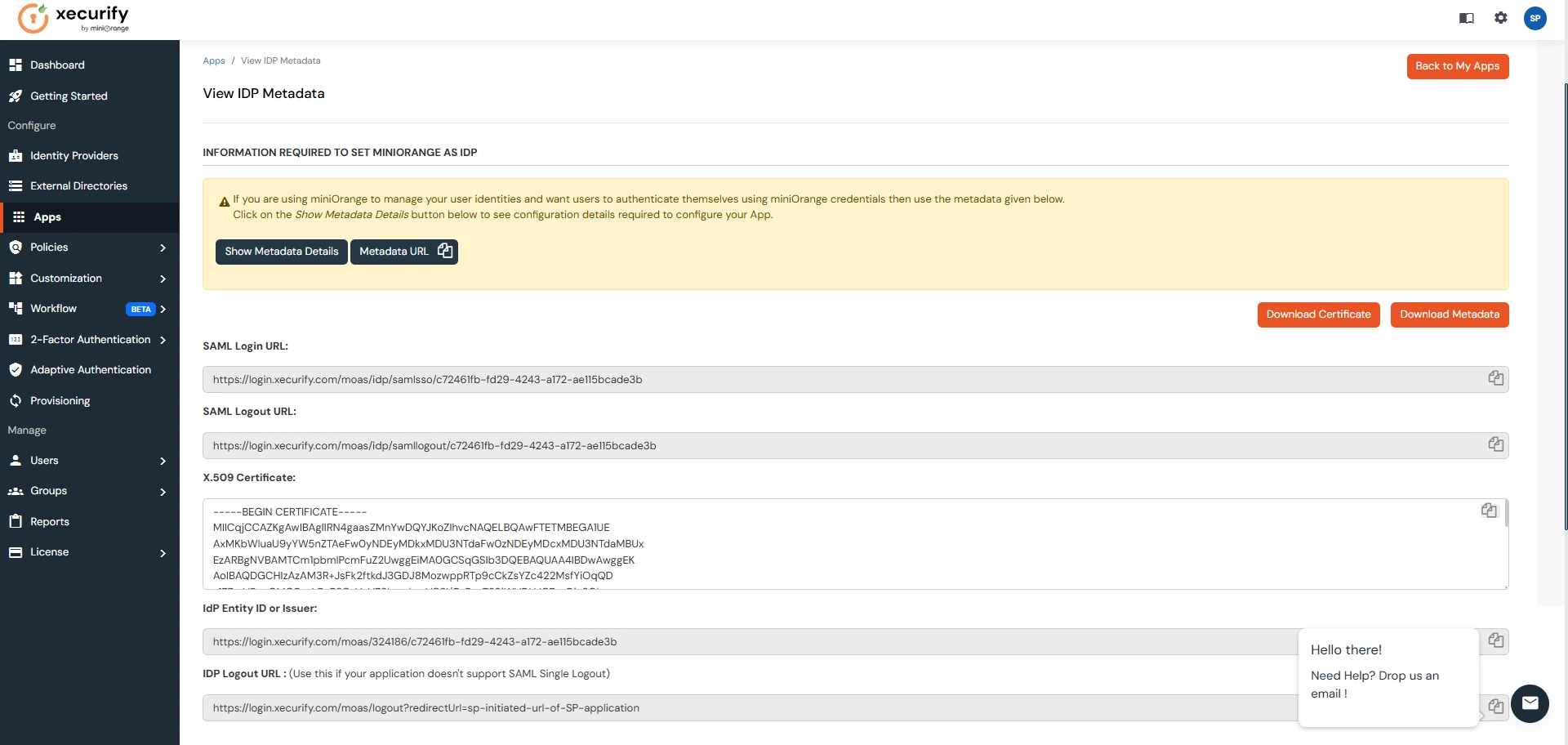
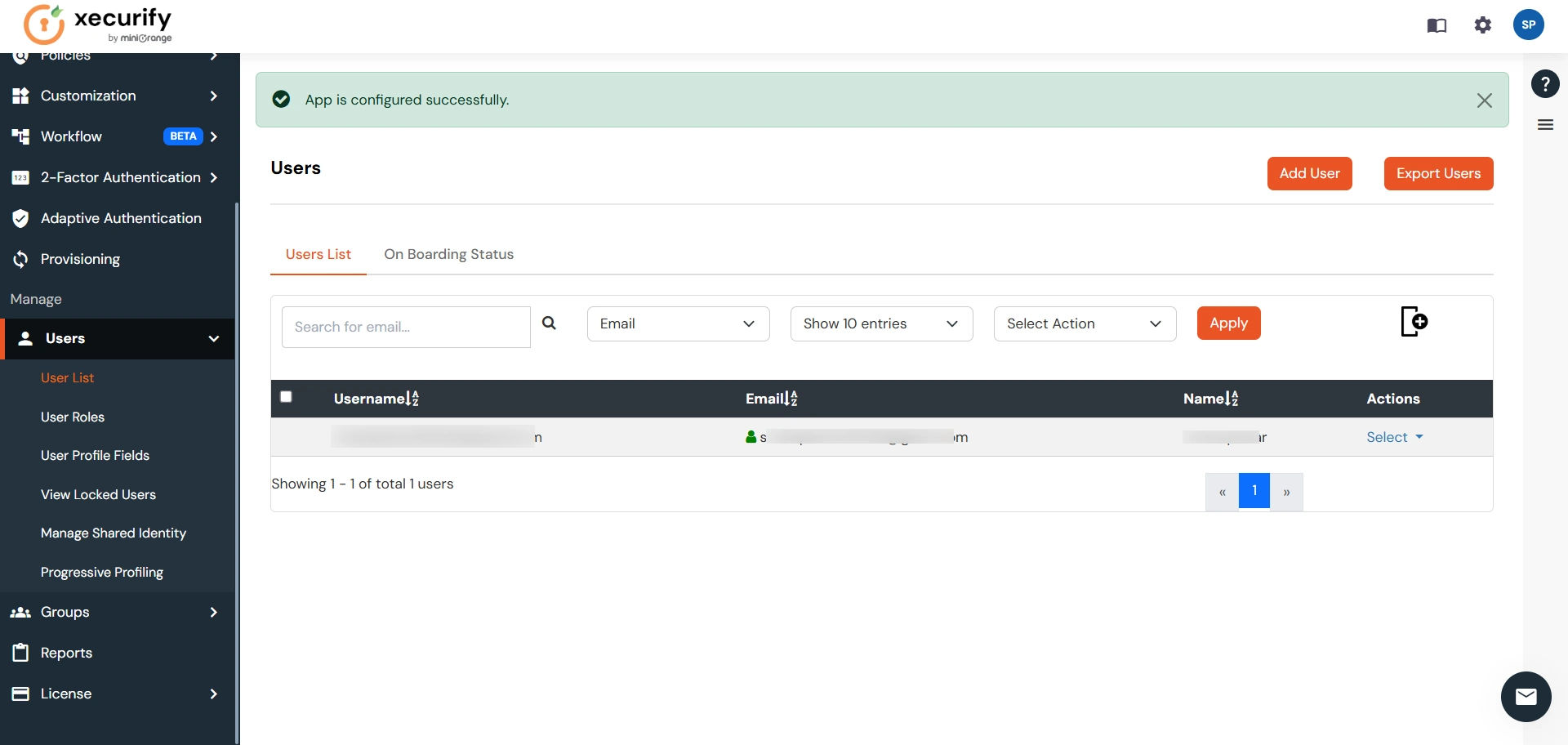
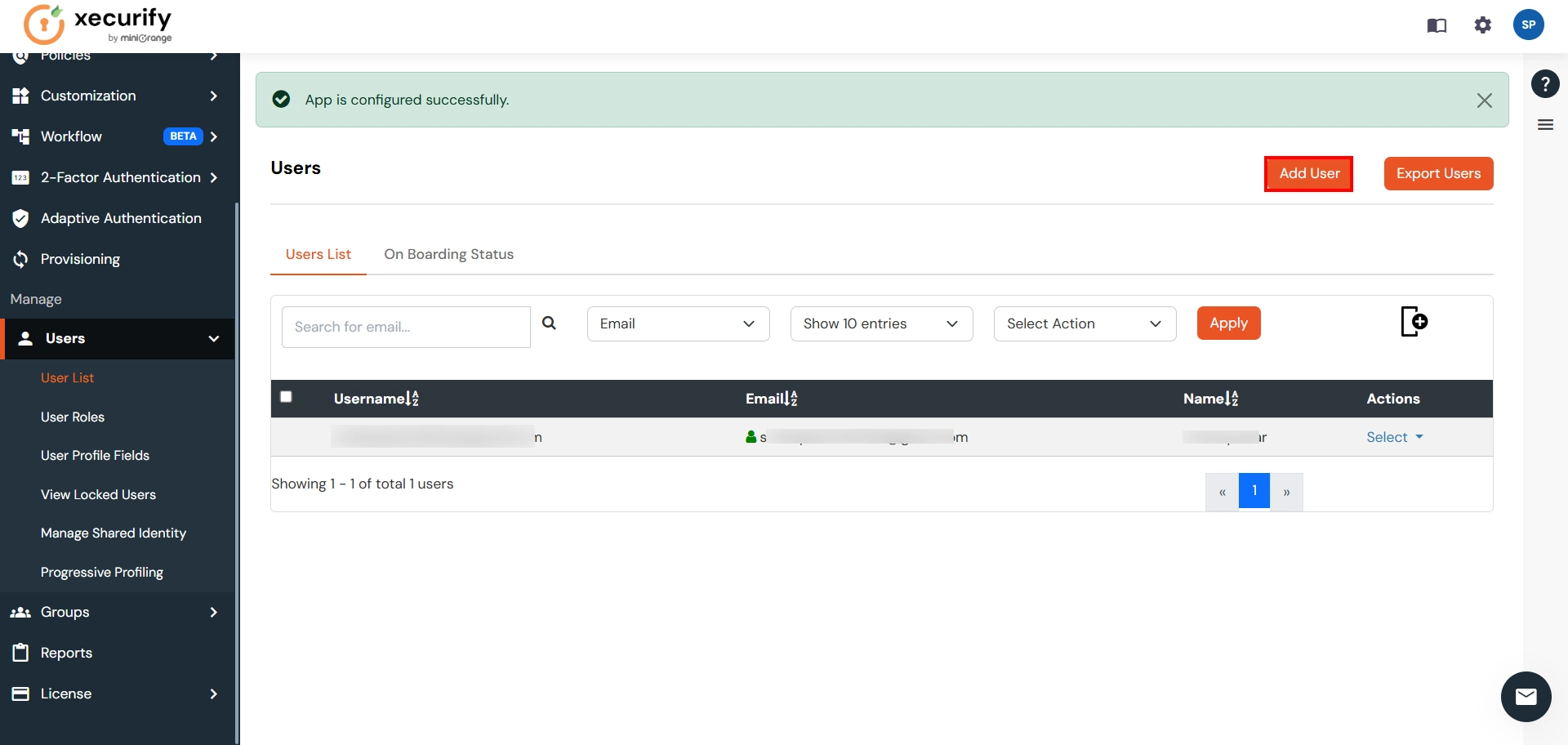
Step 2. Setup Atlassian Cloud
- Now login to Atlassian Cloud Admin Console.
- Select your organization and then select the Security tab. Click on SAML Single Sign-On from the left sidebar.
- You can click on Instructions for different Identity Providers. It provides a help page for specific IDP and Attribute Names for Attribute Mapping.
- Here you will get the SAML Configuration Instructions for different identity providers as listed. Click on Got it.
- Click on Add SAML Configuration.
- You will be redirected to the Add SAML Configuration window. Enter IDP Entity ID, SSO URL and the public certificate. Click on the Save Configuration button.
- Now you will be shown SP Entity ID & SP ACS URL as shown below. These details will be needed in miniOrange app configuration. Now set up the Authentication Policies by clicking on the View Authentication Policies.
- Click on Add Policy.
- Enter the policy name and add the policy.
- Now under Single Sign-On, click on Enable Single Sign-On.
- Then click on the Members tab besides the settings tab and click on Add Members.
- Enter details and click on Add Members.
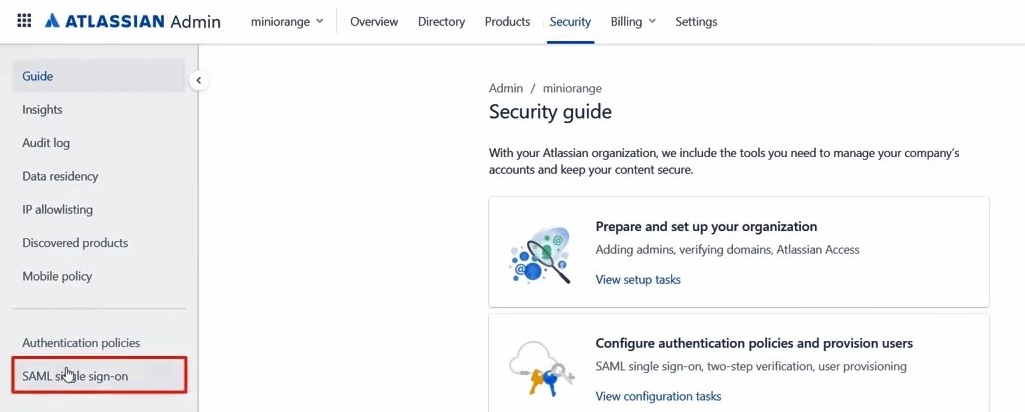
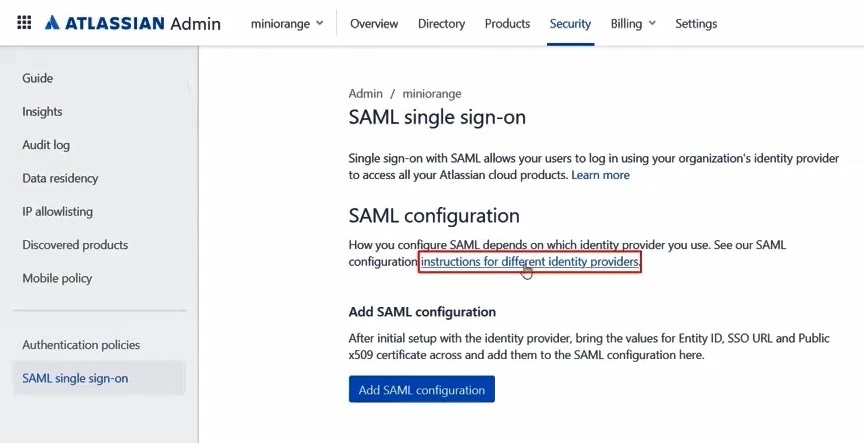
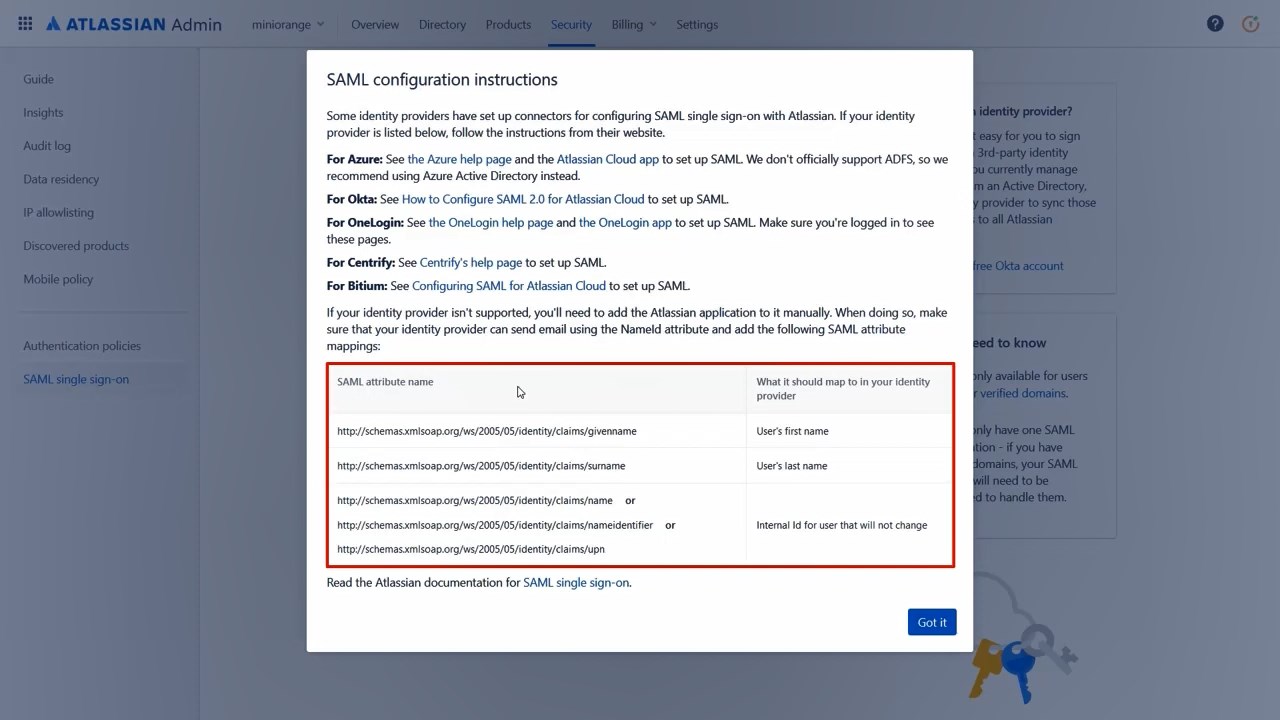
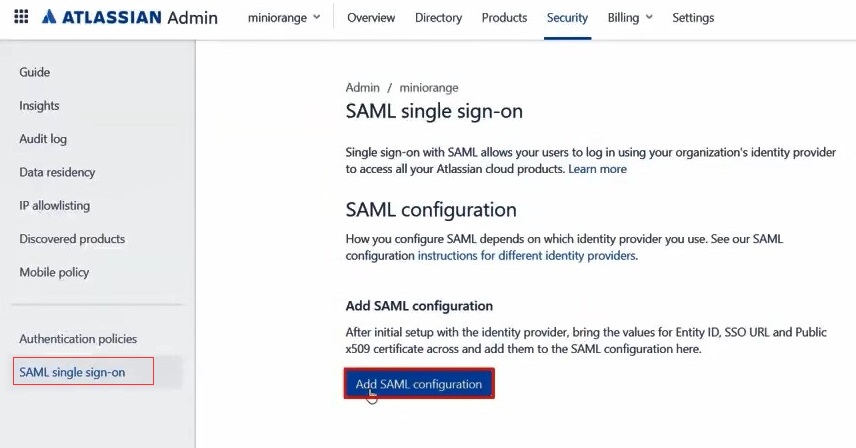
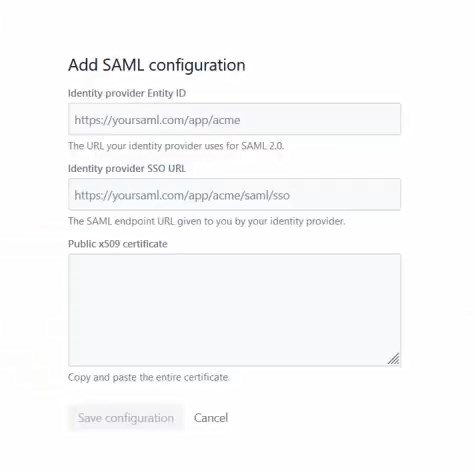
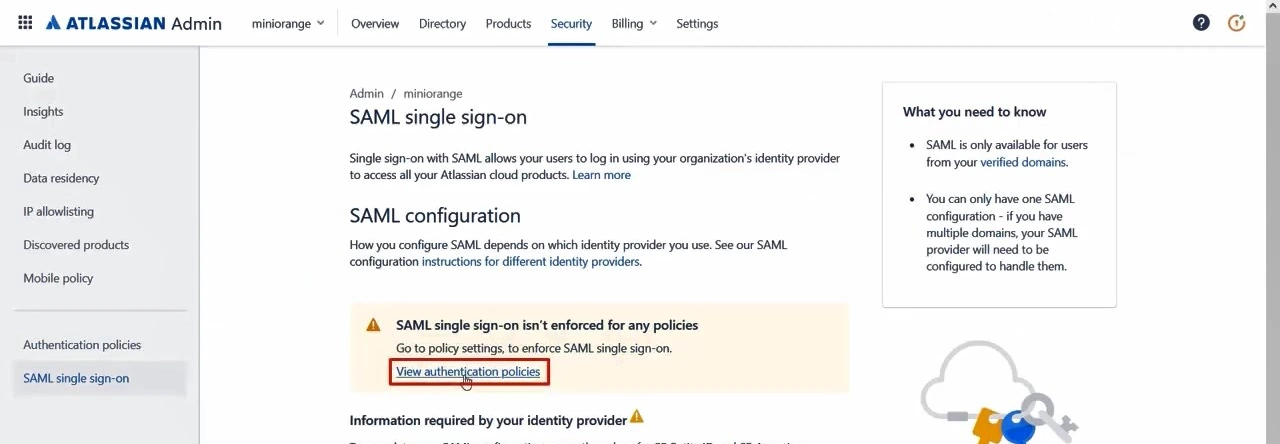
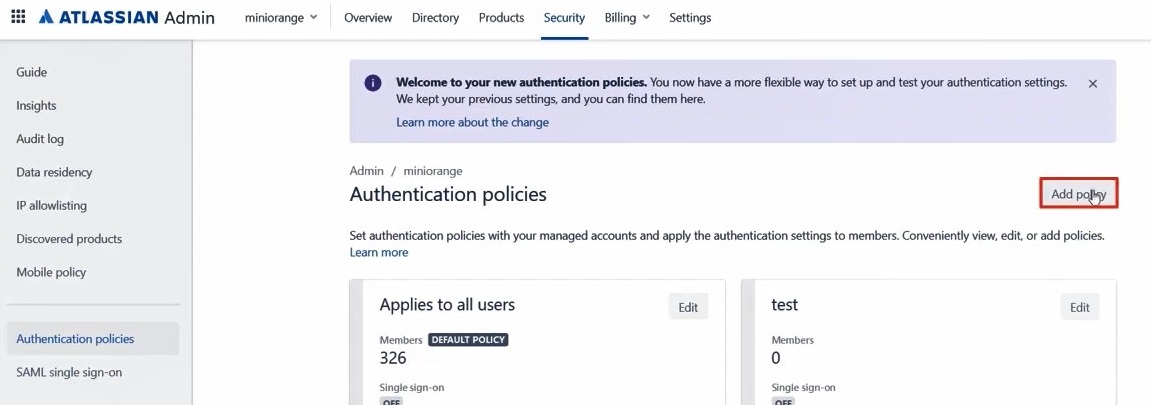
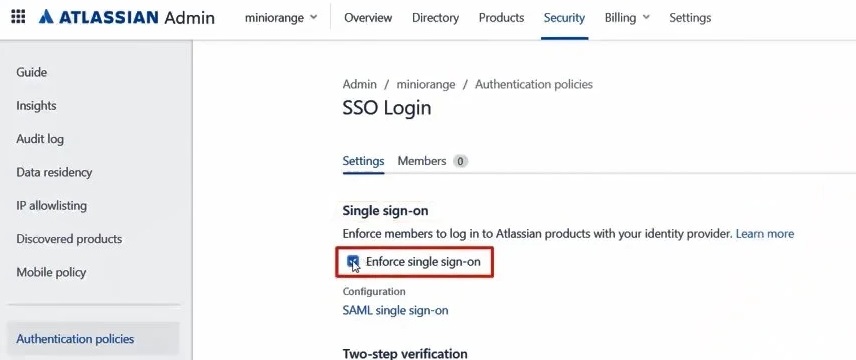

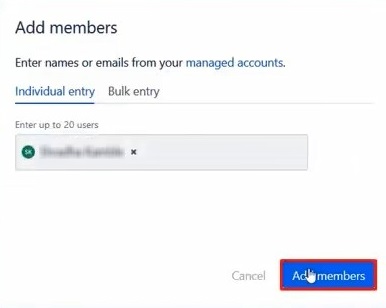
Step 3. Test Atlassian Cloud - miniOrange Configuration
- Go to Atlassian Login Page.
- Enter email and click on Continue. Then you will be redirected to miniOrange Login Page
- After logging into miniOrange, you will be successfully logged into Atlassian Cloud Dashboard
If you do not have any IDP, you can always go with miniOrange IDP.
Part 2: Setup miniOrange with WSO2
Step 1. Setup WSO2 as IDP
- First, let’s register this Consumer App in WSO2 IS. Download and start WSO2 IS.
- Once logged in, go to Main -> Service Provider and click on Add.
- Enter the Service Provider Name and Description and click on Register.
- Now go to the Service Provider->List and edit the Service Provider you have created.
- Scroll down and select Inbound Authentication Configuration and then select OAuth/OpenID Connect Configuration and click on Configure.
- You will get Callback URL/Redirect URL from Step 2.
- Copy the Callback URL and paste it in the field. Click on Add.
- When the app has been added, Client ID and Client Secret are generated for the application. Configure the WordPress OAuth SSO plugin with Client ID, Client Secret, Authentication and Access Token, Get User Info Endpoint of WSO2. Endpoints are provided at the bottom of this guide.
- Attribute Mapping: To get attributes from WSO2 you have to add following Claim URIs in your WSO2 application.
- Go to Service Provider->Claim Configuration.
- Select https://wso2.org/claims/emailaddress from Subject Claim URI dropdown.
- Add following URIs in Service Provider Claim Dialect: https://wso2.org/oidc/claim & https://wso2.org/claims
- You have successfully completed your WSO2 Server side configurations.
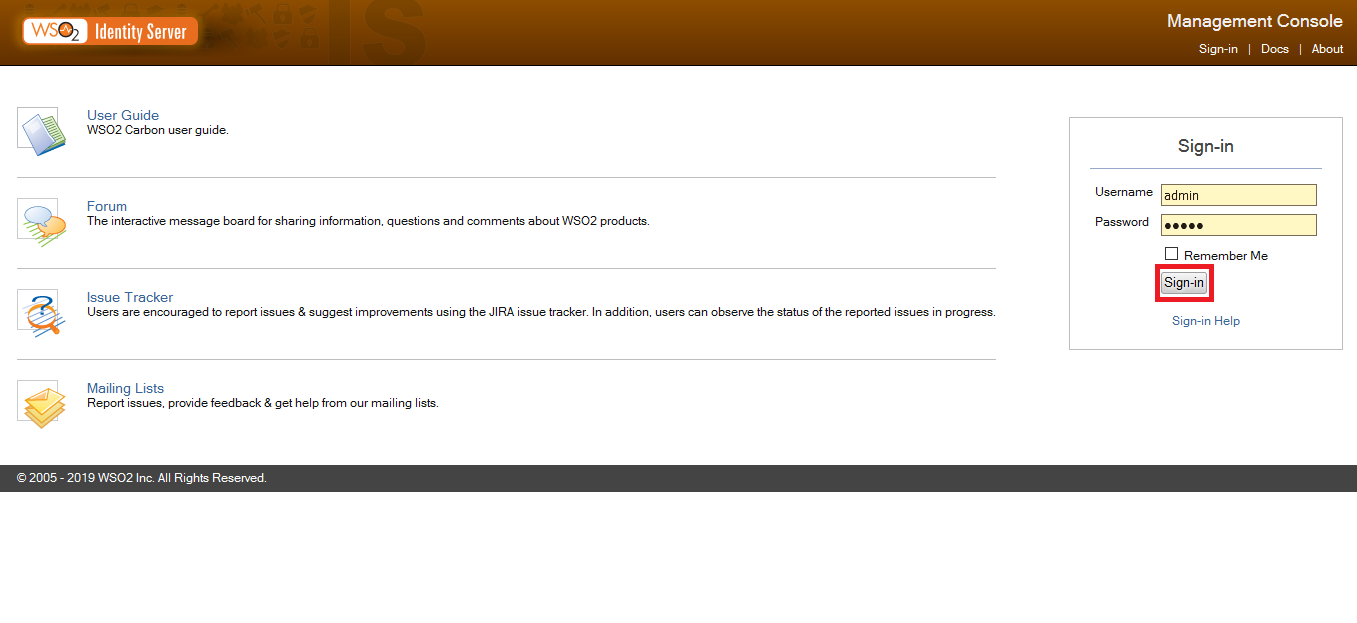

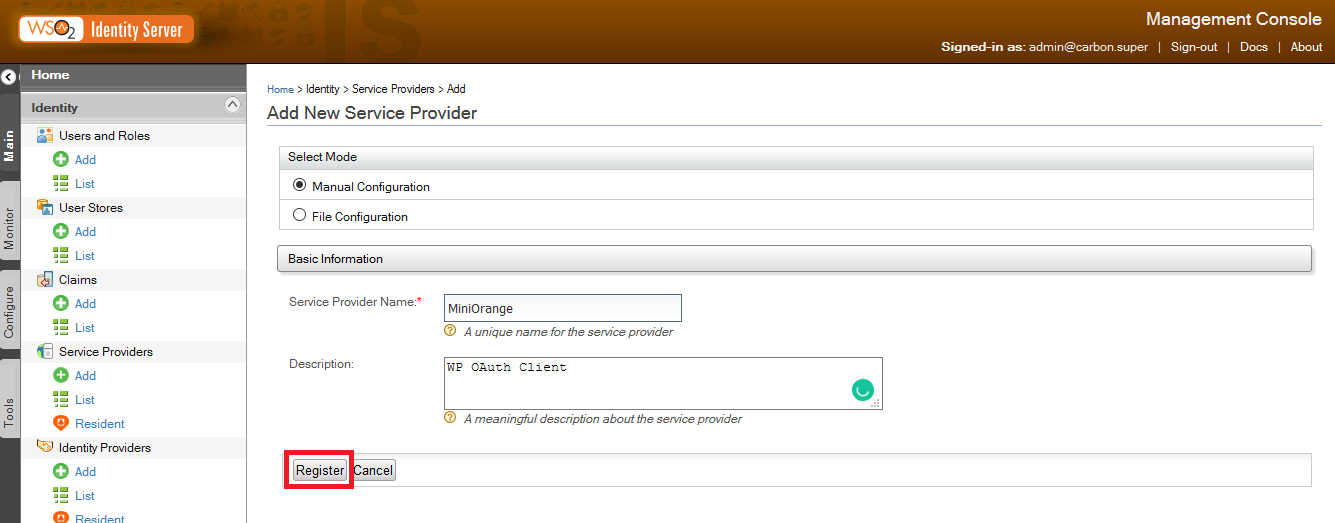
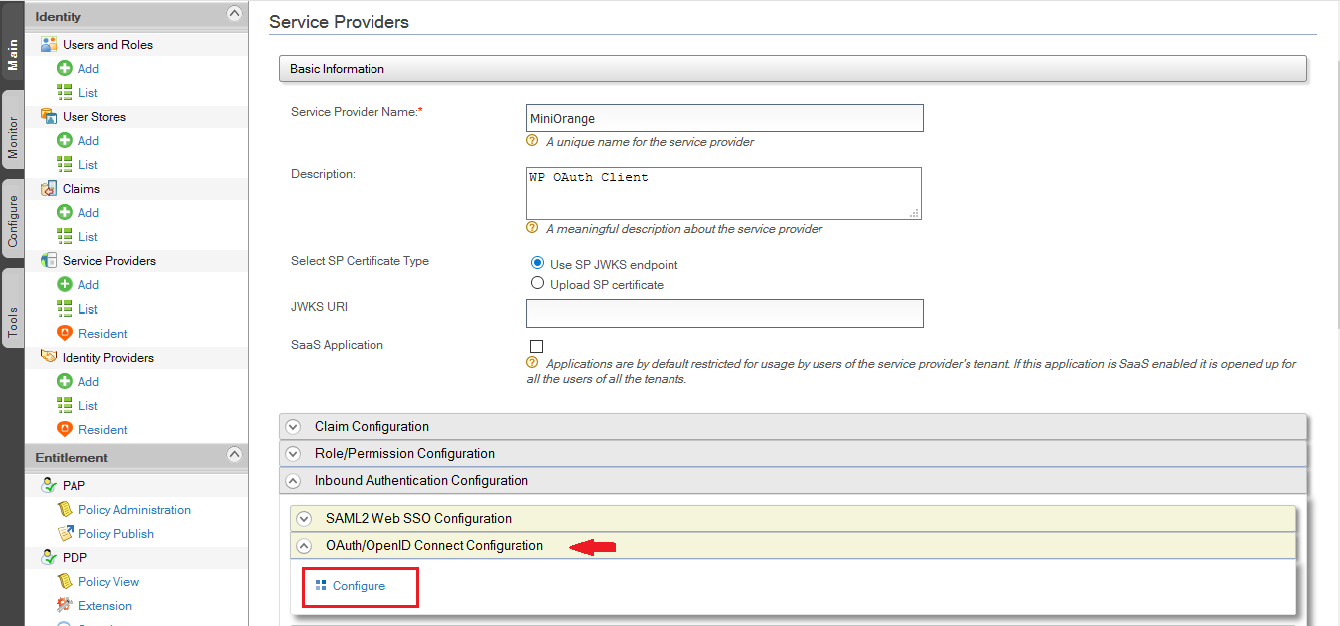
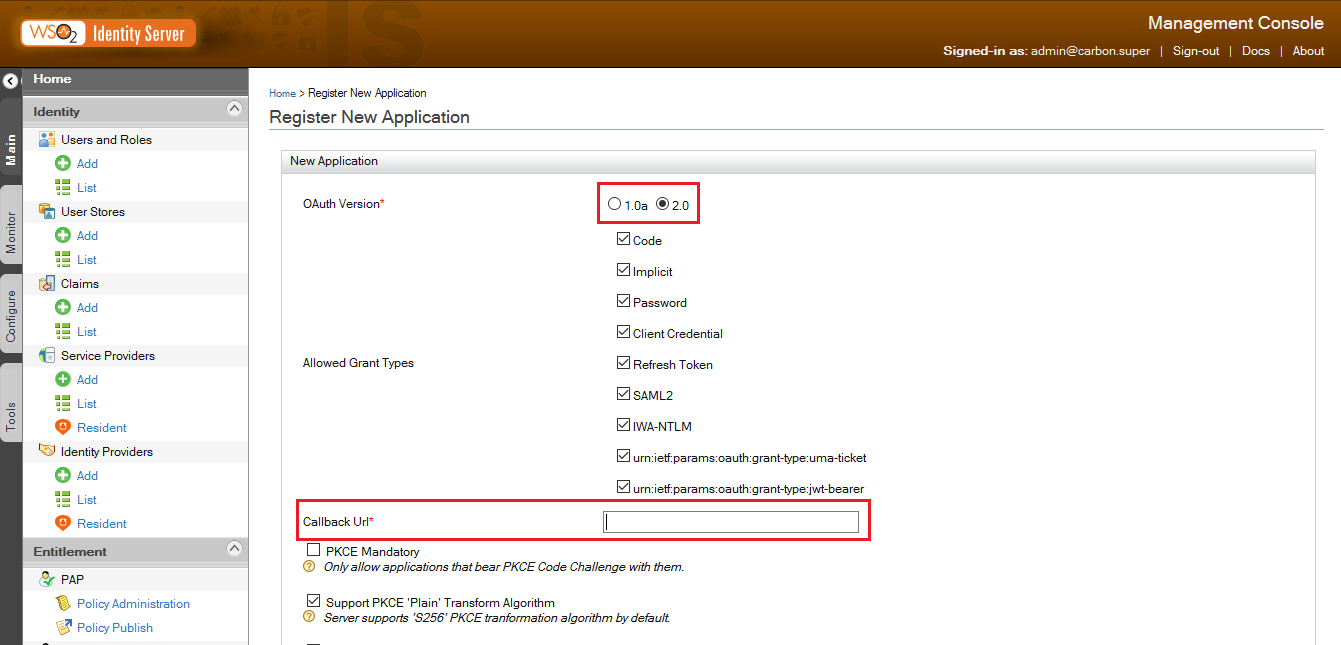
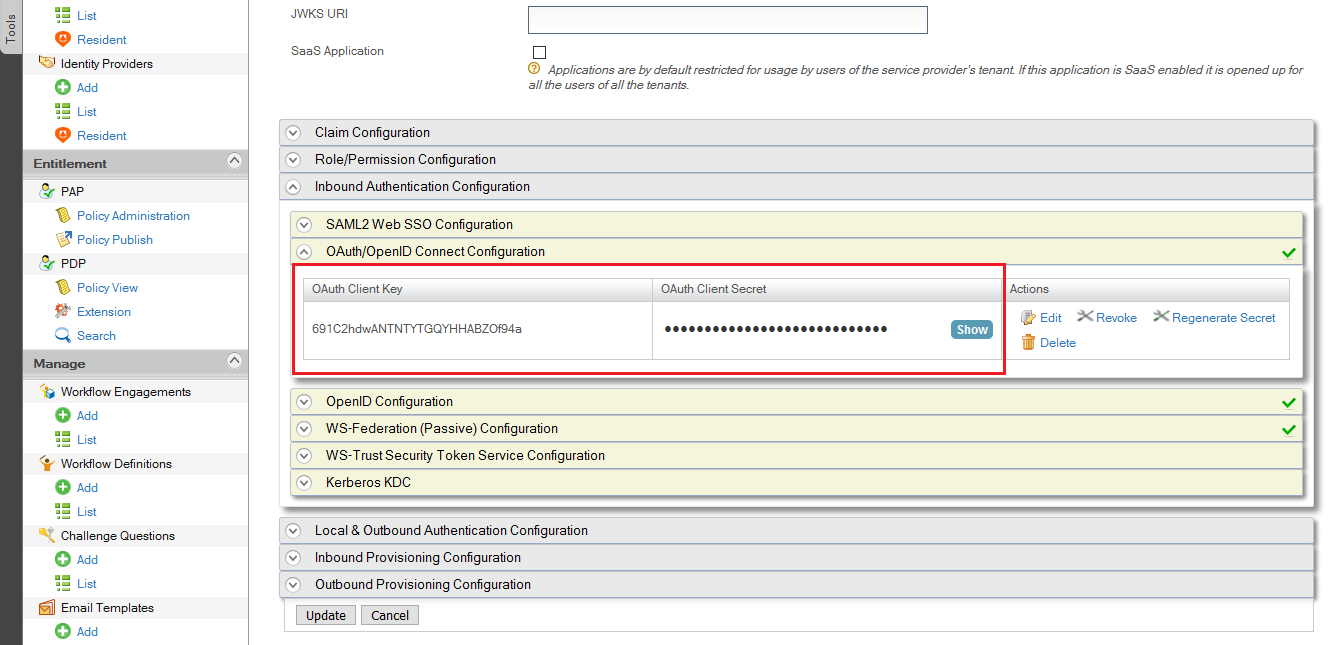
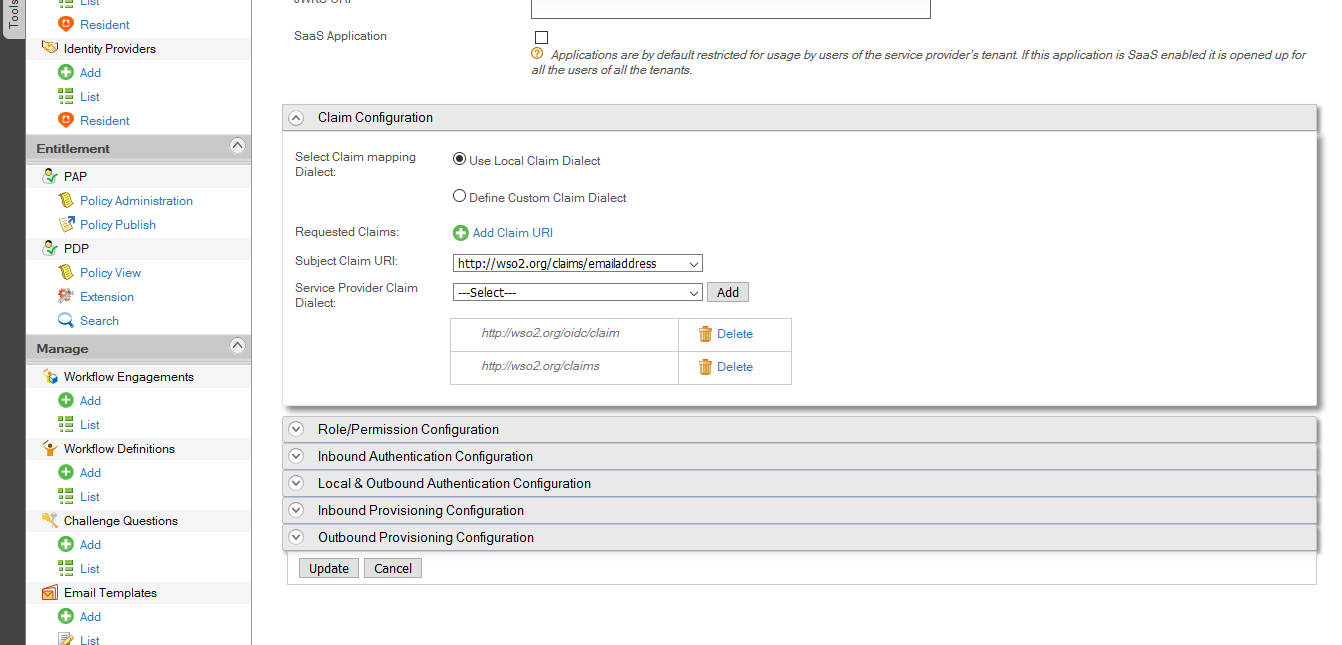
- Go to miniOrange Admin Console.
- From the left navigation bar select Identity Provider.
- Select OAuth tab.
- Enter the following values.
- Go to the miniOrange Admin Dashboard.
- Go to Identity Providers tab. Then click on select button under the app you just created. Then click on Test Connection.
- A new popup login window will open. Enter your credentials and login.
- Now you will see TEST SUCCESSFUL in a new popup window. If not, then check if you have missed any of the above step.
Step 2. Setup miniOrange as Service Provider
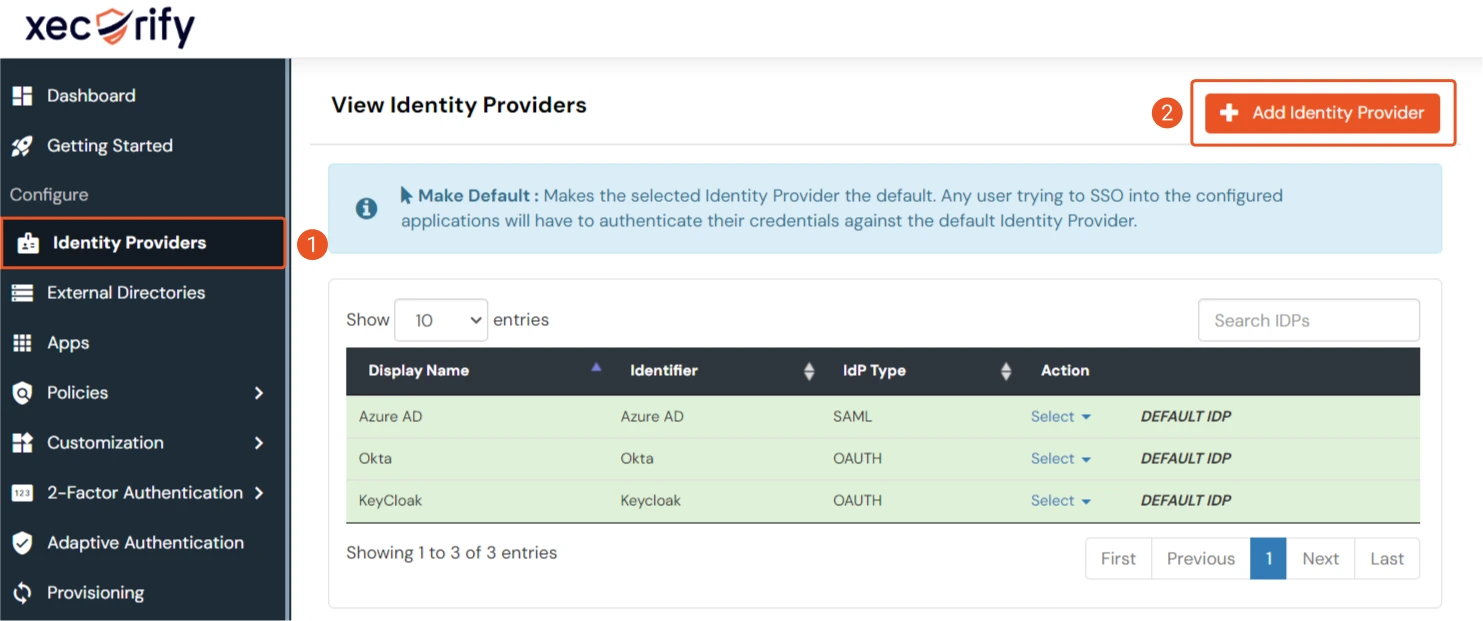
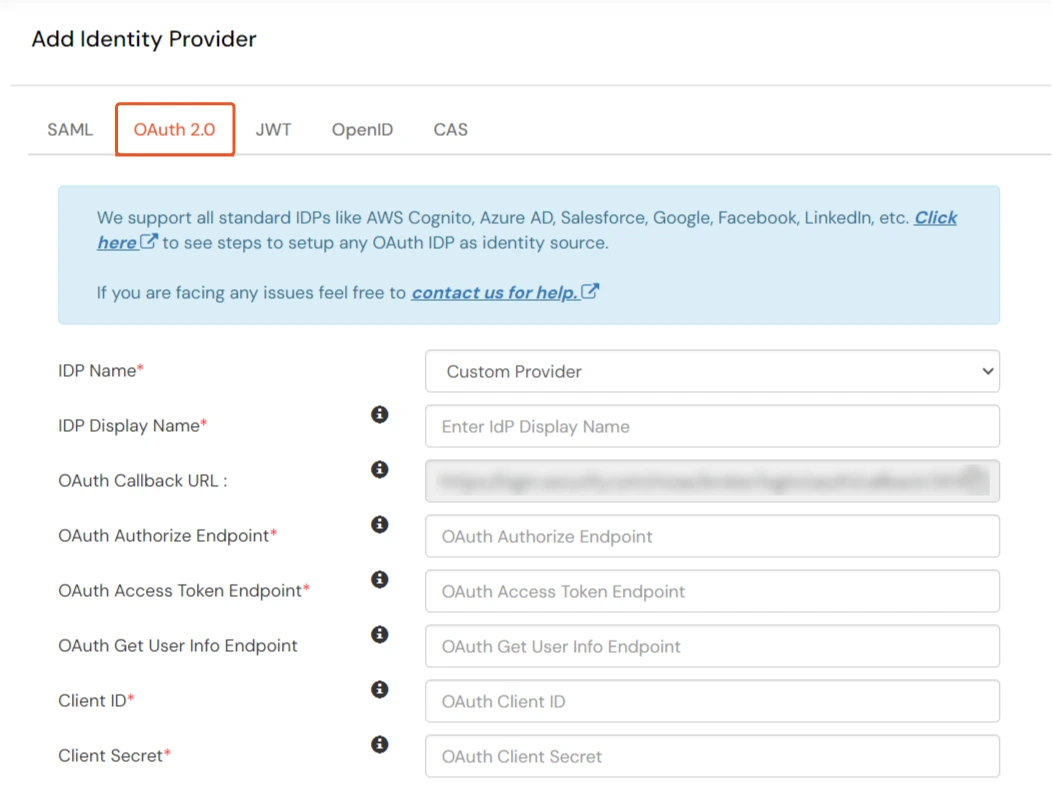
| IdP Name | Custom Provider |
| IdP Display Name | Choose appropriate Name |
| OAuth Authorize Endpoint | https://<wso2-app-domain>/oauth2/authorize | OAuth Access Token Endpoint | https://<wso2-app-domain>/oauth2/token | OAuth Get User Info Endpoint (optional) | https://<wso2-app-domain>/oauth2/userinfo |
| Client ID | From step 1 |
| Client secret | From step 1 |
| Scope | openid |
Step 3. Test connection between miniOrange and WSO2
